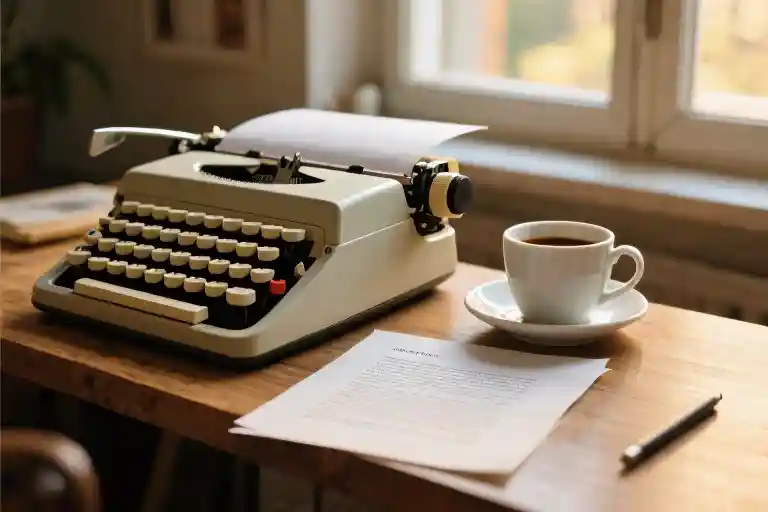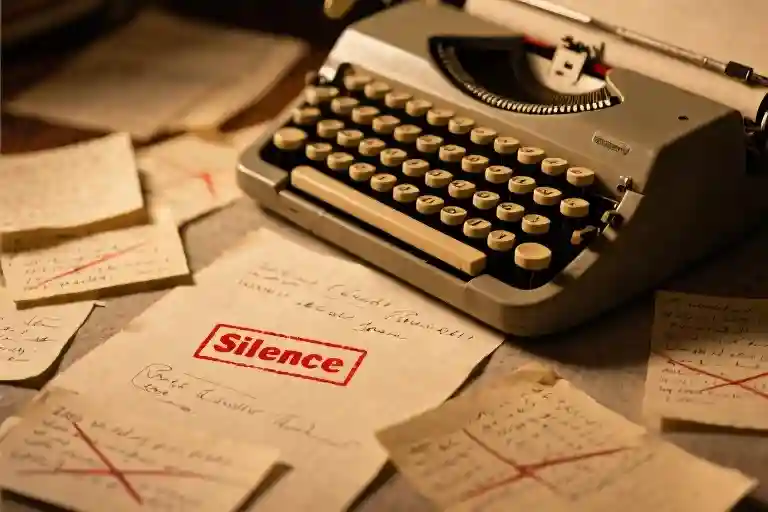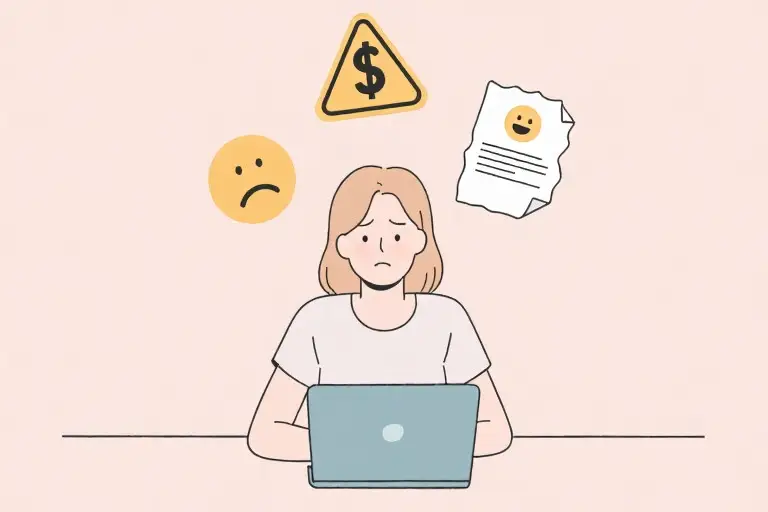Last month, I wrote a short story in three days. It wasn’t perfect – the dialogue felt stiff in places, the ending somewhat rushed. Yet this imperfect piece did something remarkable: it earned me $250 and, more importantly, reignited my belief that I could actually do this writing thing. The experience taught me something fundamental about creative work that no writing guide had ever mentioned – sometimes the smallest projects carry the biggest transformations.
If you’ve been staring at a blank page, paralyzed by the thought of writing a novel, or questioning whether you have what it takes to be a writer, I want to suggest something radical: stop thinking about writing a book. Start thinking about writing a short story instead. Not eventually, not as practice for some distant future project, but right now, as your primary creative act.
Here’s the uncomfortable truth most writing advice won’t tell you: the novel you’ve been planning to write? It might never get written. Not because you lack talent or discipline, but because creative brains aren’t wired for marathon projects without intermediate victories. The psychological weight of a novel-length commitment crushes more writing dreams than any lack of skill ever could.
Short stories operate differently. They’re the espresso shots of creative writing – concentrated, immediate, and delivering their punch quickly. Where novels demand years of faith in an unseen outcome, short stories give you completion’s dopamine hit in days or weeks. That finished draft, however flawed, becomes tangible proof you can see a project through to the end. My $250 story certainly wasn’t brilliant literature, but typing ‘The End’ gave me something far more valuable than any payment: the visceral certainty that I was someone who finishes what they start.
This matters because writing confidence isn’t built through planning or dreaming – it’s forged through the accumulation of completed work. Every short story you finish becomes a brick in the foundation of your identity as a writer. The more you complete, the less abstract and more inevitable your writing practice feels. Before my short story experiment, I’d spent two years ‘working on my novel’ with nothing to show but scattered scenes and growing self-doubt. Three months of writing short pieces has produced more growth – and yes, income – than those years of stalled ambition.
There’s an alchemy to short stories that makes them uniquely powerful for developing writers. Their constrained length forces decisive choices about every element – no meandering subplots to hide weak characterization, no extra chapters to compensate for thin themes. You learn faster because every writing decision carries weight. The feedback loops are tighter too; you can write, revise, and submit multiple stories in the time it takes to complete one novel draft. Each submission becomes a masterclass in what works and what doesn’t.
Perhaps most surprisingly, short stories offer financial pathways most beginners never consider. While the publishing industry gates novel publication behind agents and acquisitions committees, short story markets – from literary journals to genre magazines to digital platforms – actively seek new voices. My $250 came from a publication most writers have never heard of, one that pays promptly upon acceptance rather than years after contract signing. These markets won’t make you rich, but they create something more important for emerging writers: a professional track record and the psychological shift from ‘aspiring’ to ‘working’ writer.
The beautiful paradox of short stories is this: by focusing on small, manageable projects, you often achieve more than through grand ambitions. You build a portfolio instead of a single unfinished manuscript. You develop actual readers rather than hypothetical future fans. You earn both money and credibility while still learning your craft. And when you’re ready to attempt that novel? You’ll approach it as someone who’s already proven they can complete stories, not as someone hoping they might.
The Three Irreplaceable Advantages of Short Stories
Writing a novel feels like staring at a mountain you’re supposed to climb barefoot. The distance terrifies you before you take the first step. That unfinished manuscript in your drawer? It’s not a failure – it’s proof that long-form writing demands more than most of us can consistently give. But what if I told you there’s a trail around that mountain? A path where you can still reach breathtaking views without the months of struggle?
Short stories are that detour. They’re not the ‘lesser’ version of writing – they’re the smart writer’s training ground. Here’s why:
They’re Actually Finishable
Novels collapse under their own weight. You lose the thread in chapter four, your antagonist becomes a cardboard cutout by chapter seven, and by the time real life interferes – a sick child, a work deadline – that 80,000-word dream might as well be on Mars.
A short story respects your reality. Most clock in between 1,000-5,000 words. That’s three to ten pages. You can draft one during your commute, on lunch breaks, or after the kids are in bed. The magic isn’t in the word count – it’s in typing ‘The End.’ That first completed story proves you’re someone who finishes things. I still have the file name of my first one: ‘DinerStory_FINAL_ACTUALLYDONE.doc.’
They Give You Instant Feedback Loops
Writing improves through iteration, not theory. With novels, you might spend years before realizing your dialogue falls flat or your pacing drags. Short stories compress that learning curve.
Each completed piece becomes a diagnostic tool. That 2,000-word mystery reveals your tendency to over-explain clues. The flash fiction piece shows where your descriptions turn purple. Unlike novel chapters that depend on context, short stories stand alone – making flaws glaring and fixes obvious.
I submitted my fifth short story to a workshop and received this note: ‘Your characters all sound like NPR hosts.’ It stung, but by story eight, I’d developed distinct voices. Try fixing that across 300 novel pages.
They’re Your Creative Laboratory
That dystopian romance idea? The historical fiction about a laundress in 1920s Chicago? Test them as short stories first.
Short forms forgive experimentation. You can:
- Write the same scene from three viewpoints
- Test an unreliable narrator
- Attempt present tense for the first time
Failures cost you days, not years. Successes become templates – my published sci-fi story started as a 1,200-word character study. When an idea survives the short story crucible, you’ll know it’s novel-worthy.
Here’s the secret no writing guru admits: Many ‘novelists’ are just short story writers who got ambitious. Alice Munro built a Nobel Prize career on shorts. George Saunders’ Lincoln in the Bardo began as a failed short story. That piece you’re hesitating to start? It might be 3,000 words away from proving you’re a real writer.
The Minimalist Process for Writing Short Stories
Most writers get paralyzed before they even begin. The blank page stares back, demanding brilliance, originality, and perfect prose—all at once. Here’s the secret: short stories thrive on constraints. That 500-word limit isn’t your enemy; it’s the guardrail keeping you from tumbling into creative chaos.
Start With What Stings
Forget epic world-building. The best short story ideas emerge from everyday moments that leave emotional residue—the barista who remembered your order after one visit, the subway passenger humming off-key showtunes, the way your neighbor’s sprinkler always hits your bedroom window at 6:03 AM. These micro-experiences contain entire universes.
Carry a notes app (or the classic napkin). When something makes your pulse quicken—whether from irritation, nostalgia, or bewildered amusement—jot three sensory details about why it matters. That’s your raw material. My $250 story began with observing two strangers arguing over a parking spot at Trader Joe’s. The absurdity of their Shakespearean-level dramatics over 9 square feet of asphalt became a 1,200-word character study.
The 500-Word Scaffold
This structure works for 80% of contemporary short fiction:
- Inciting Irritation (0-100 words): Drop readers into an already-uncomfortable situation. “Marco knew three things: his flight was boarding in 17 minutes, his ex-wife was somewhere in Terminal B, and the TSA agent now holding his grandfather’s pocket watch had the smug demeanor of someone who enjoyed their power a little too much.”
- The Swerve (100-400 words): Introduce one game-changing detail that shifts the conflict. Maybe the TSA agent recognizes the watch. Maybe Marco spots his ex wearing the same sweater she wore at their divorce hearing. This isn’t about resolution—it’s about revelation.
- Echo, Not Explosion (Last 100 words): End with an image or line that mirrors the opening, but now charged with new meaning. Perhaps Marco abandons the watch, walking away as the agent calls after him. The metal detector beeps in rhythm with his phone buzzing—his ex texting, always texting, even now.
Let It Breathe, Then Slash
The 24-hour cooling-off period is nonnegotiable. Your brain needs distance to spot flabby prose or missed opportunities. When you return, ask:
- Does every sentence either advance the plot or deepen character? If not, cut it.
- Is the central conflict resolved too neatly? Good short stories often end with lingering discomfort.
- Would this make sense to someone who wasn’t inside your head when writing it? Beta readers help, but even reading aloud catches logic gaps.
This process isn’t about churning out masterpieces. It’s about building creative muscle memory. Each completed story—regardless of quality—rewires your brain to recognize patterns, compress narratives, and trust your instincts. That parking lot spat I wrote about? The dialogue practice alone improved my novel’s courtroom scenes more than three months of agonizing over chapter outlines ever could.
Turning Short Stories into Income Streams
The moment I received that first $250 payment for a short story, something shifted in how I viewed my writing. It wasn’t just about creative expression anymore – I’d discovered tangible proof that words could pay bills. What surprised me more was realizing how many doors short fiction can open for writers at any stage.
The Submission Game: Where to Send Your Work
Platforms like Medium’s Partner Program operate on a simple premise: the more eyes on your story, the more you earn. My first viral piece there garnered about 50,000 views, translating to roughly $1.50 per thousand reads. Not life-changing money, but significant for something written in three evenings. Literary magazines like The Sun Magazine pay $300-2,500 per accepted piece, while genre-specific outlets like Clarkesworld offer $0.10 per word. The key lies in matching your voice to the publication’s taste – a dark literary piece belongs in Granta, not Analog Science Fiction.
What newcomers often miss is the cumulative effect. Submitting five stories to different markets creates five income possibilities rather than betting everything on one novel. I keep a color-coded spreadsheet tracking submissions: green for accepted, yellow for pending, red for rejected (with editor feedback noted). This system turned writing into a numbers game where persistence pays.
Social Media as Your Amplifier
That 2,000-word ghost story you wrote? Chop it into ten 200-word teasers for Twitter threads. The emotional climax scene becomes an Instagram carousel with moody visuals. I repurpose every story into at least three content formats:
- Microfiction versions for platforms with character limits
- Audio recordings (Anchor.fm lets you monetize podcasts)
- Visual adaptations using Canva templates
Last Halloween, I turned a flash fiction piece about a haunted typewriter into a TikTok series. The videos gained 40k views and drove hundreds to my Patreon where I offered the full story. This approach works because audiences crave complete experiences – they’ll follow the breadcrumbs from social snippets to your paid content.
Building Your Literary Resume
Editors at publishing houses routinely advise aspiring novelists: ‘Show us your short form publications.’ My current book deal originated when an agent read my sci-fi story in Asimov’s Magazine. Even non-paying publications add credibility; listing five published shorts in your query letter demonstrates you can finish projects and work with editors.
Consider creating themed collections every 6-12 months. Four of my horror stories became a $2.99 Kindle eBook that now makes $80-120 monthly. That’s not retirement money, but it funds my writing software subscriptions and coffee habit. More importantly, it creates discoverability – readers who enjoy your free Medium stories might buy your collection, creating a virtuous cycle.
The psychology behind short story monetization mirrors fitness training. You wouldn’t attempt a marathon without running 5Ks first. Similarly, these compact narratives train your creative muscles while generating income and audience trust. The writer who publishes ten shorts across various platforms has ten times the exposure of someone laboring for years on one unpublished novel.
Your next step? Pick one existing story right now and:
- Format it for a Medium publication
- Create a Twitter thread version
- Submit to one paying market
The beauty of short fiction lies in its versatility – the same piece can be your creative outlet, marketing tool, and income source simultaneously. That’s economic alchemy every writer should master.
Start Writing Today
Open a blank document right now. Write one paragraph about that odd little moment you witnessed yesterday—the barista who slipped an extra cookie into your bag, the stranger who laughed too loud at their own joke, the way sunlight hit your kitchen wall at an unfamiliar angle. Don’t overthink it. Just capture that flicker of something real in 50 words or less.
This is how every worthwhile story begins. Not with grand plans, but with small, stubborn acts of noticing. That paragraph you just wrote? It could grow into your first published piece. Mine started exactly this way—a 300-word observation about my neighbor’s peculiar gardening habits became the $250 story I mentioned earlier.
For those ready to take the next step, here are resources that helped me move from casual writing to getting paid:
Writing Tools
- Hemingway Editor (free online): Forces clarity by highlighting complex sentences
- Otter.ai (free tier available): Dictate story ideas during daily walks
- The 10-Minute Writing Habit by Bernard Grant (book): Micro-practices for busy schedules
Submission Platforms
- Medium Partner Program: Earn through member reading time (my $250 came from here)
- The Sun Magazine: Pays $300+ for personal narratives
- Reedsy Prompts: Weekly contests with cash prizes
Leave your opening paragraph in the comments below—I’ll personally respond to three submissions with constructive feedback. Not seeking perfection, just proof you’ve begun. Because that’s the secret no writing guide will admit: published authors aren’t magically talented. They’re simply people who kept showing up at the page, one small story at a time.
Your literary life starts when you decide it does. Today works.





